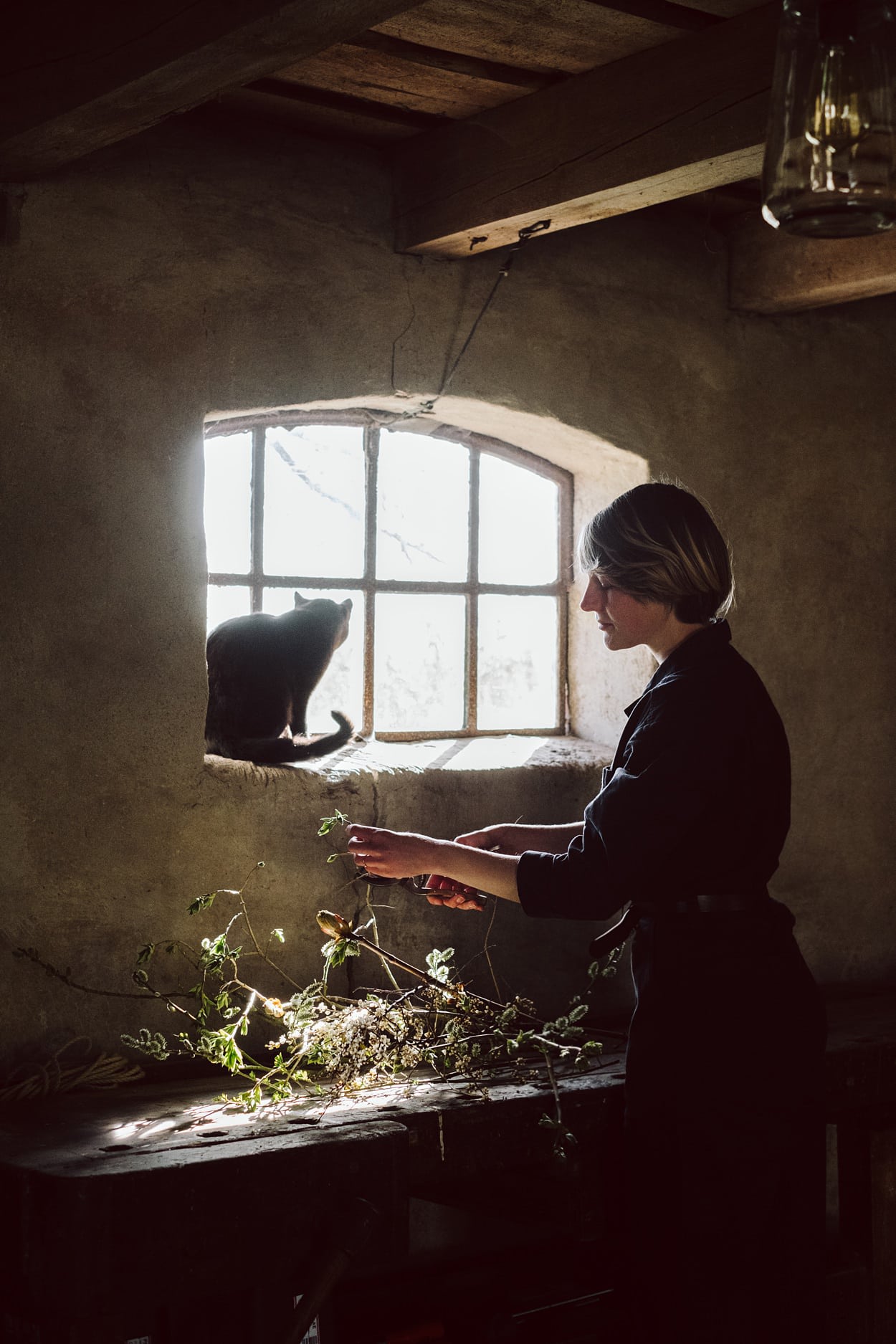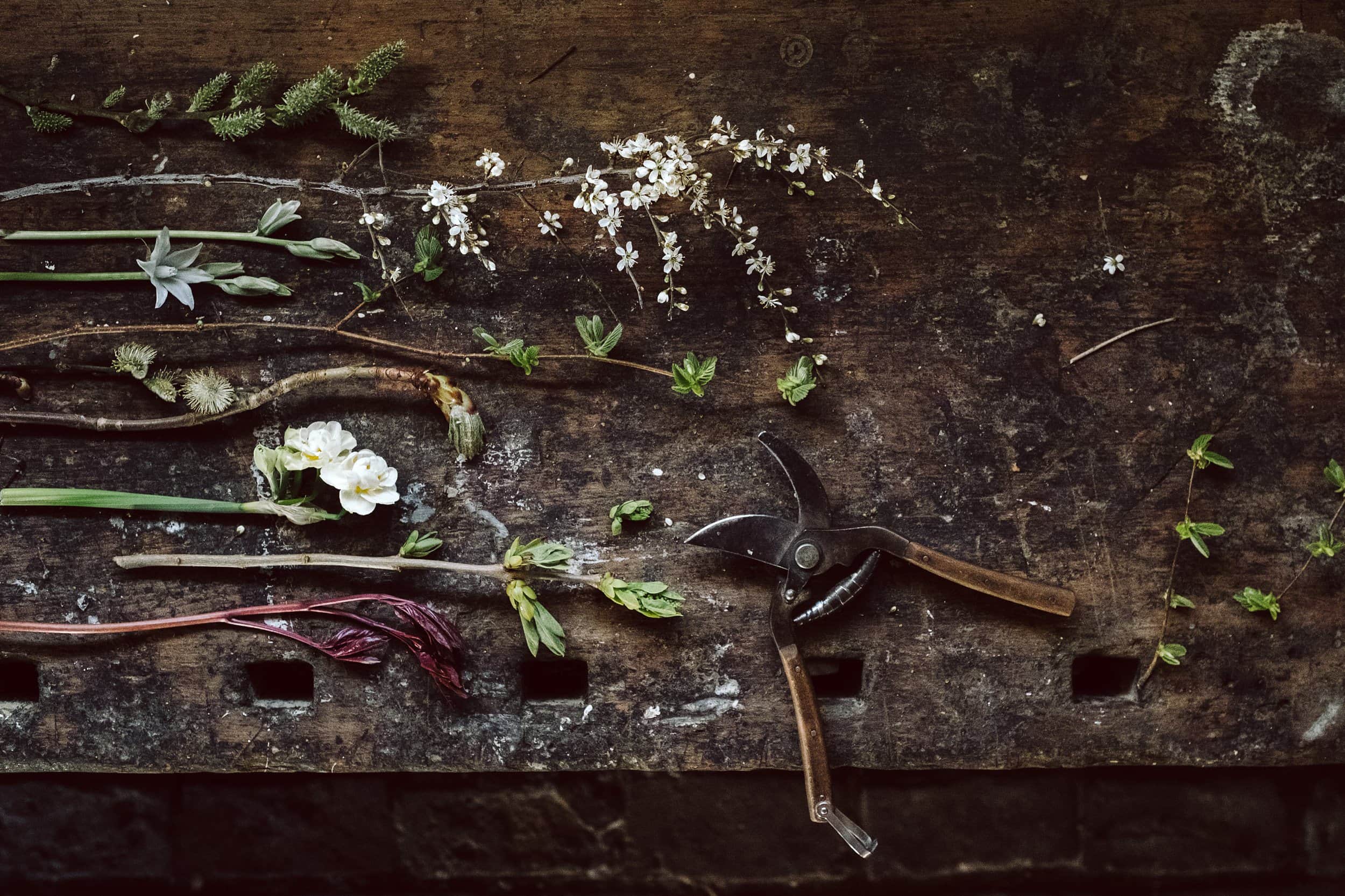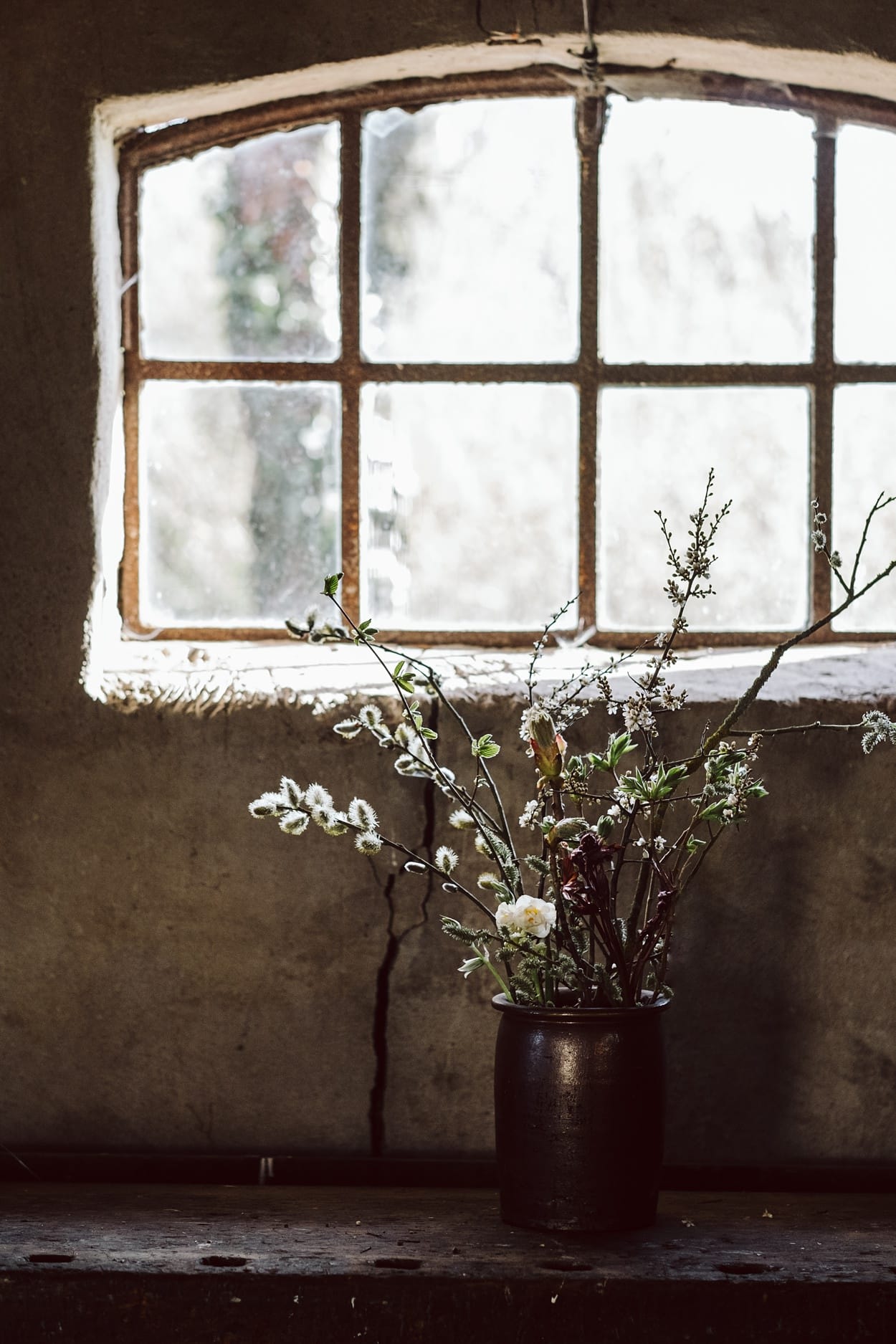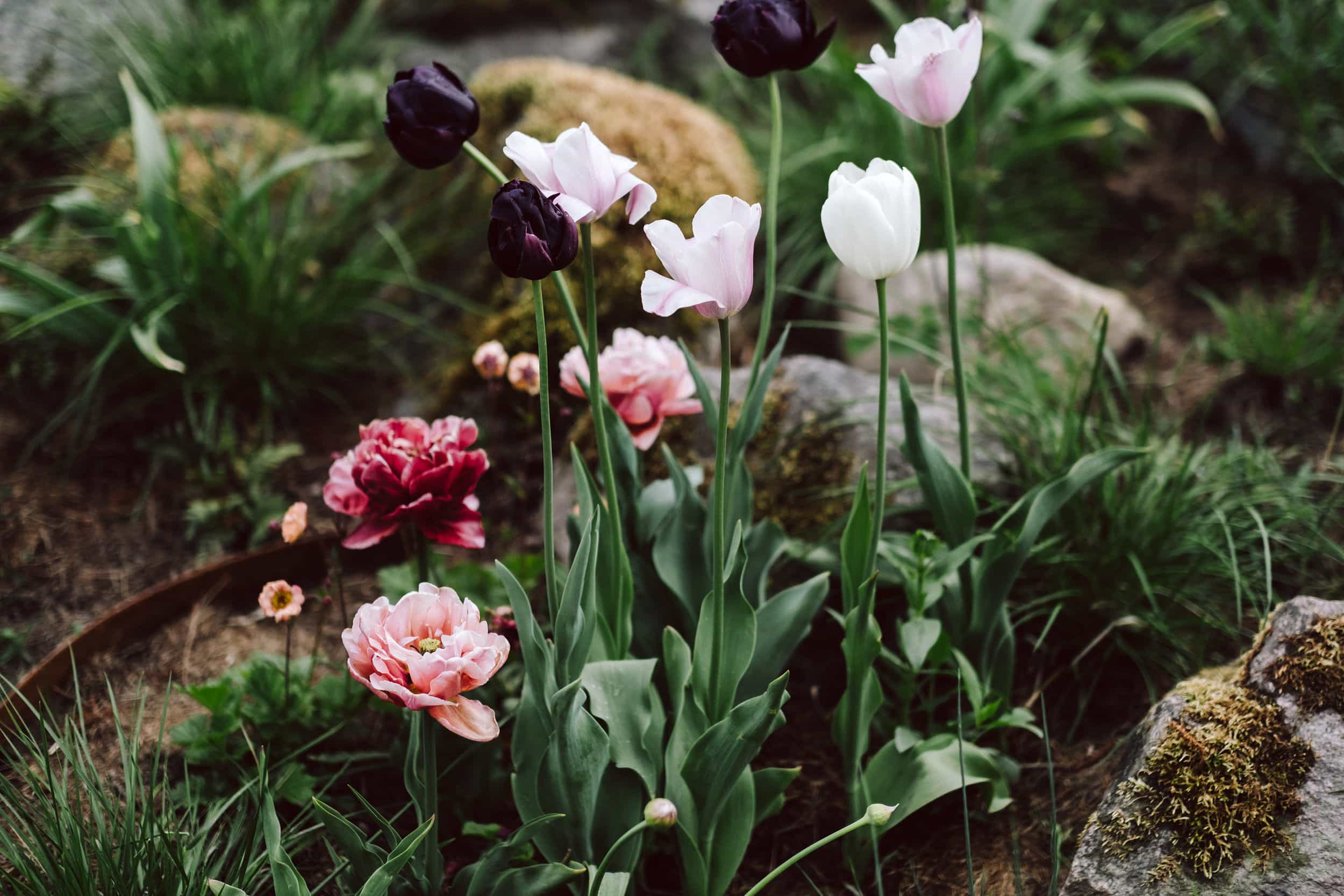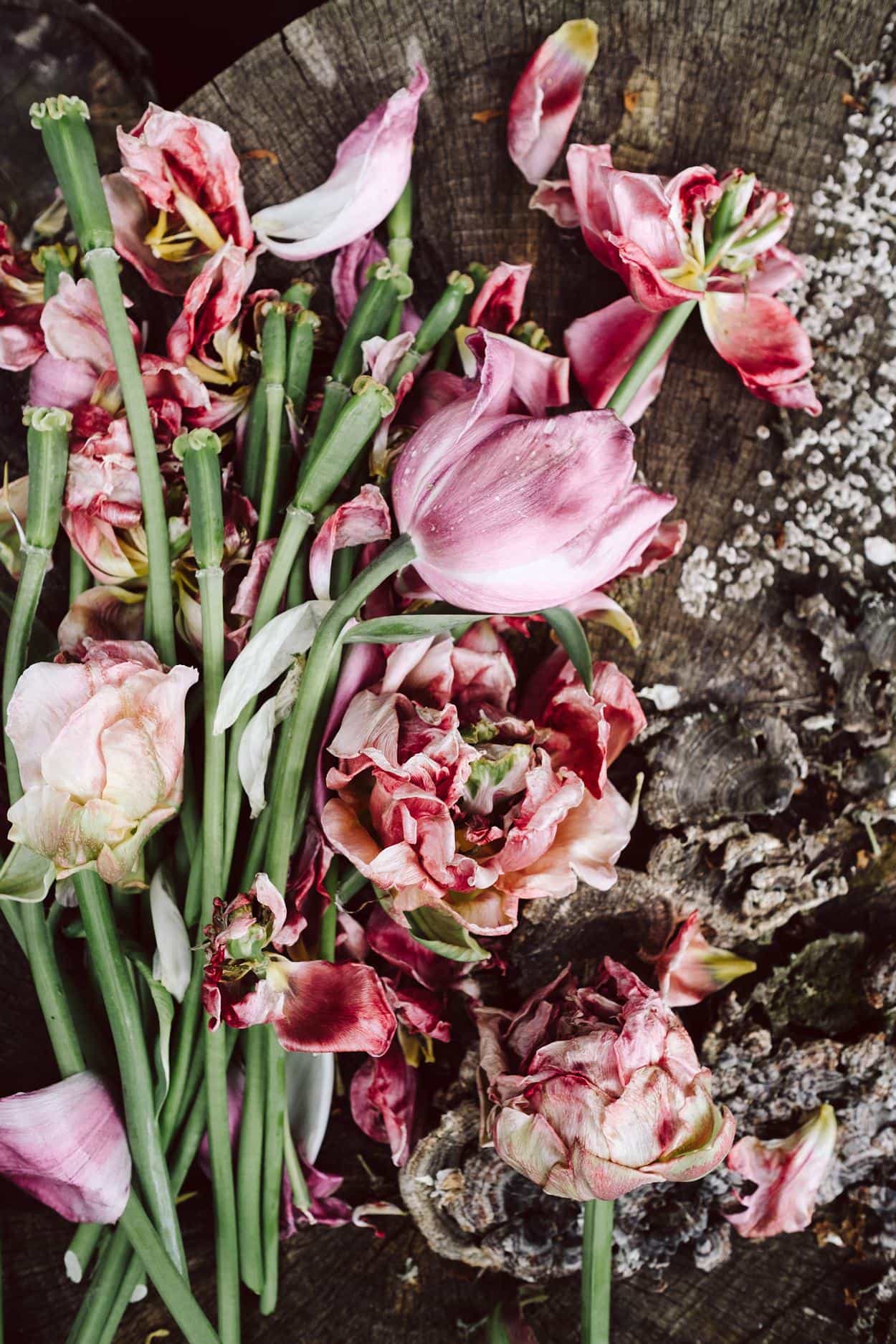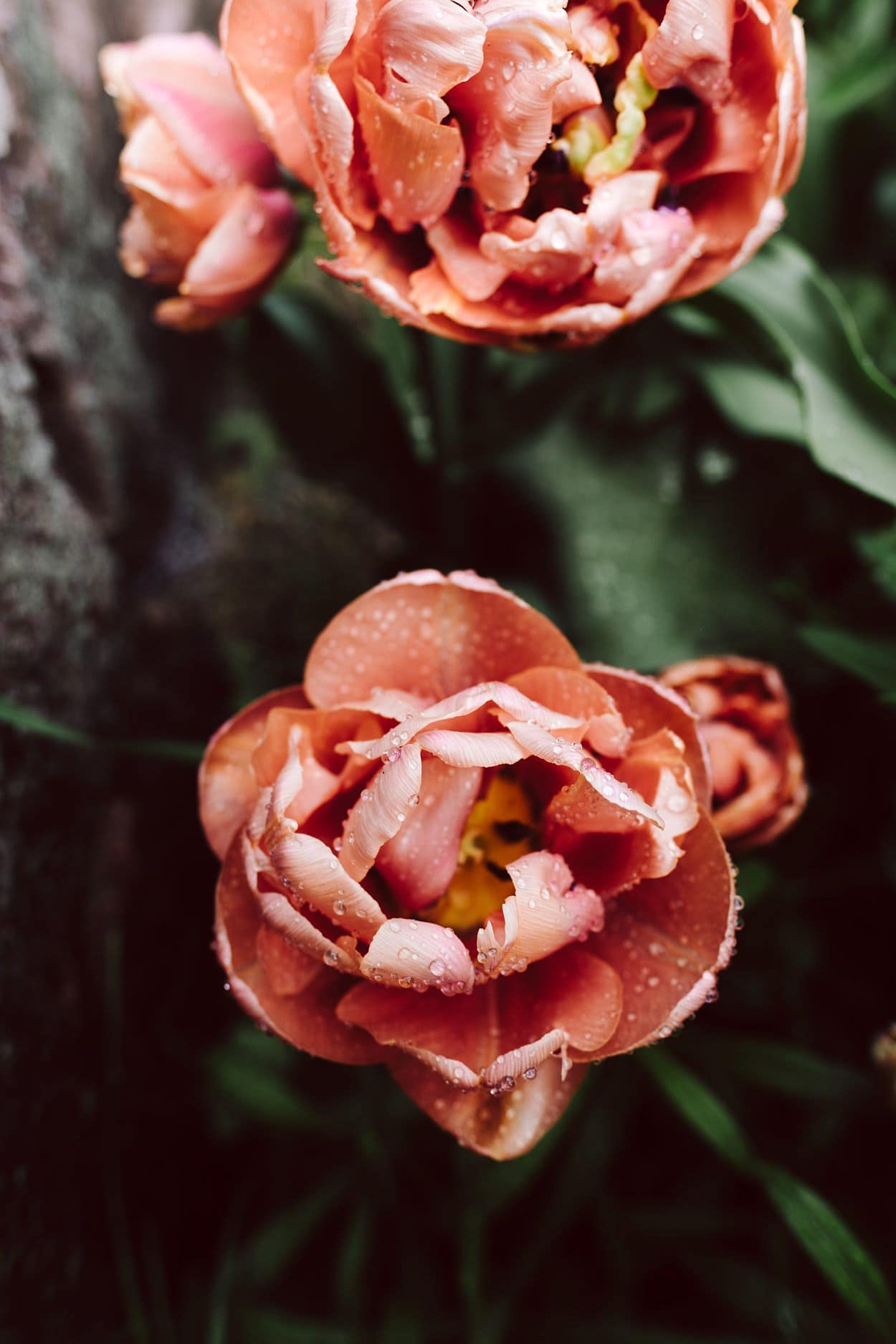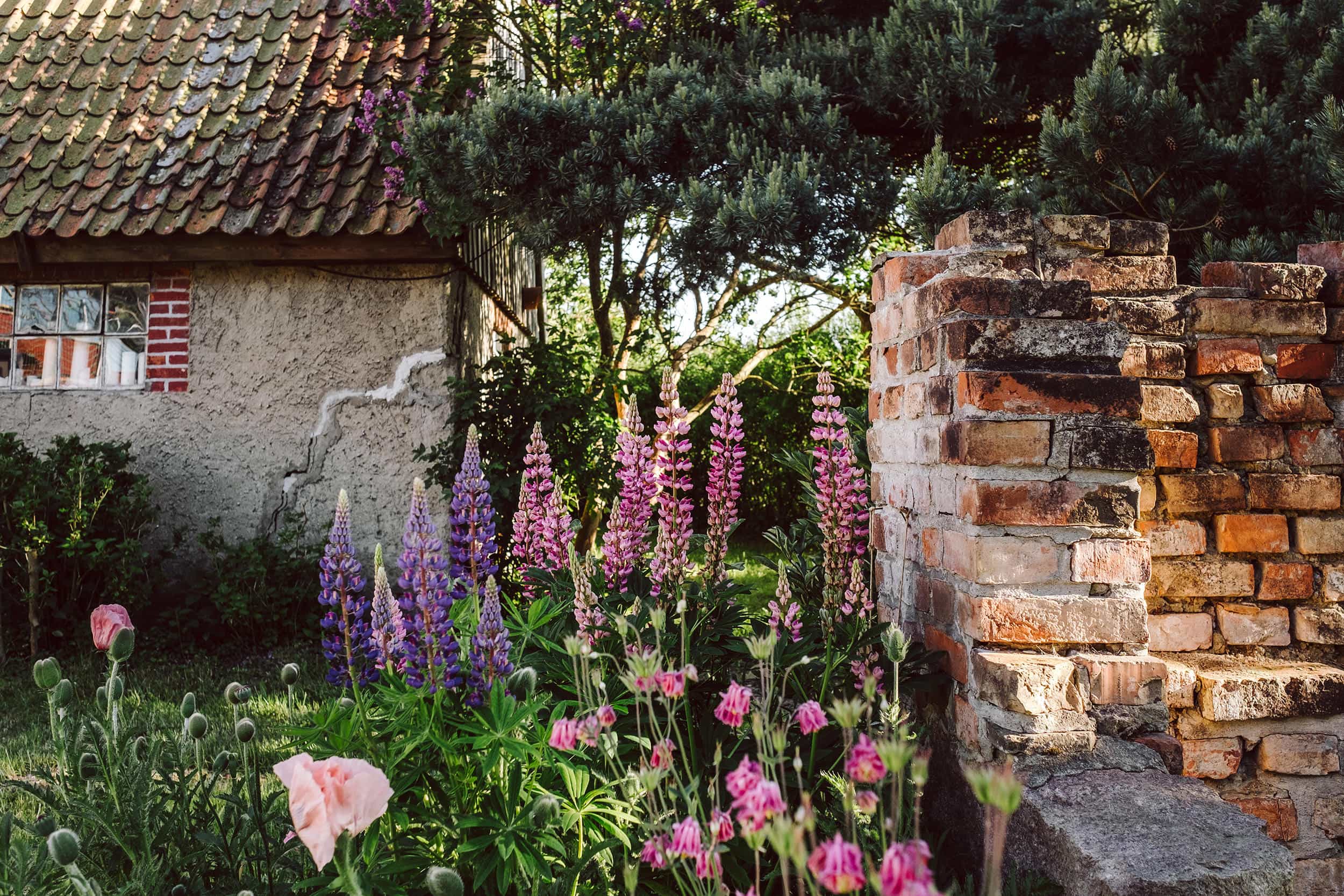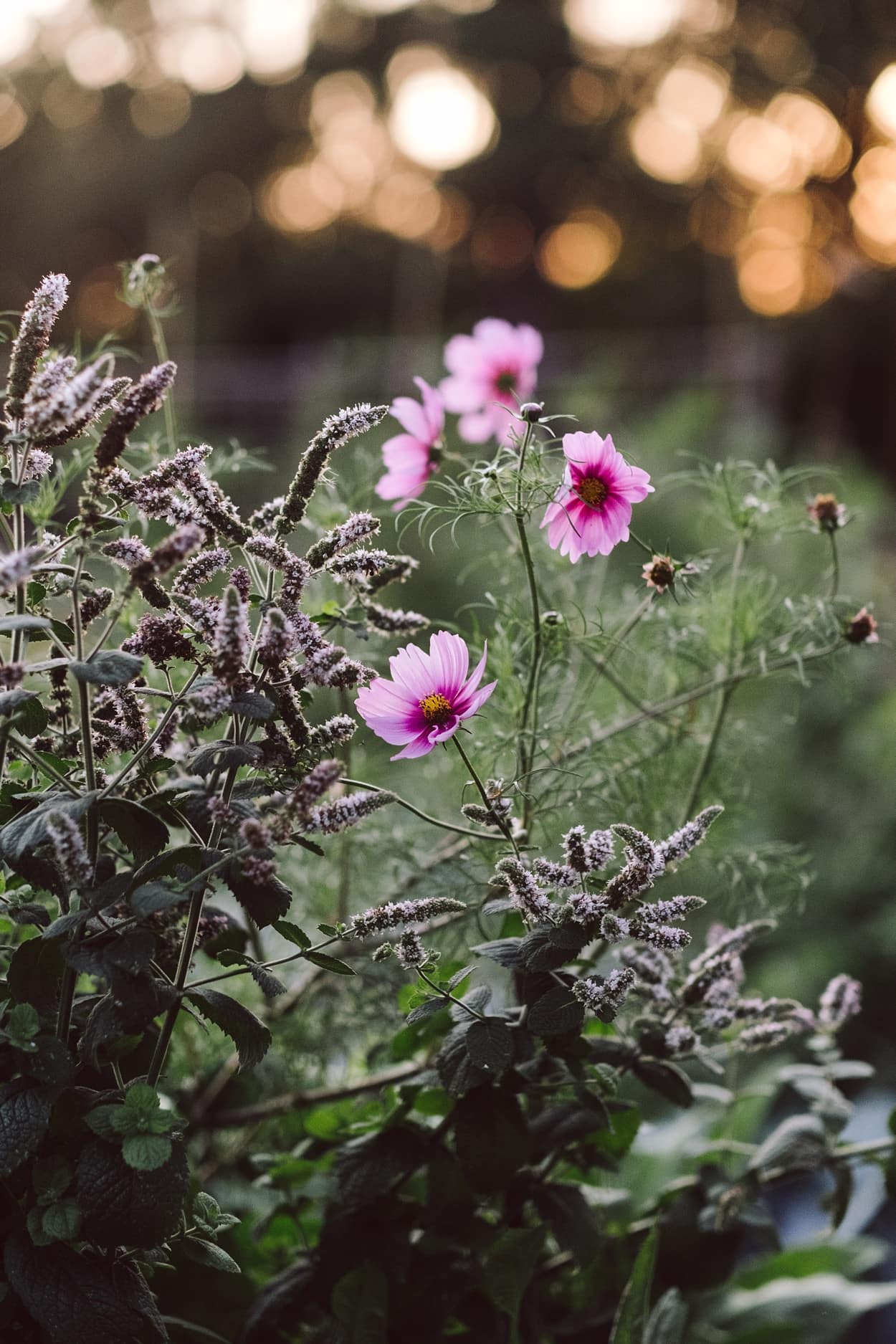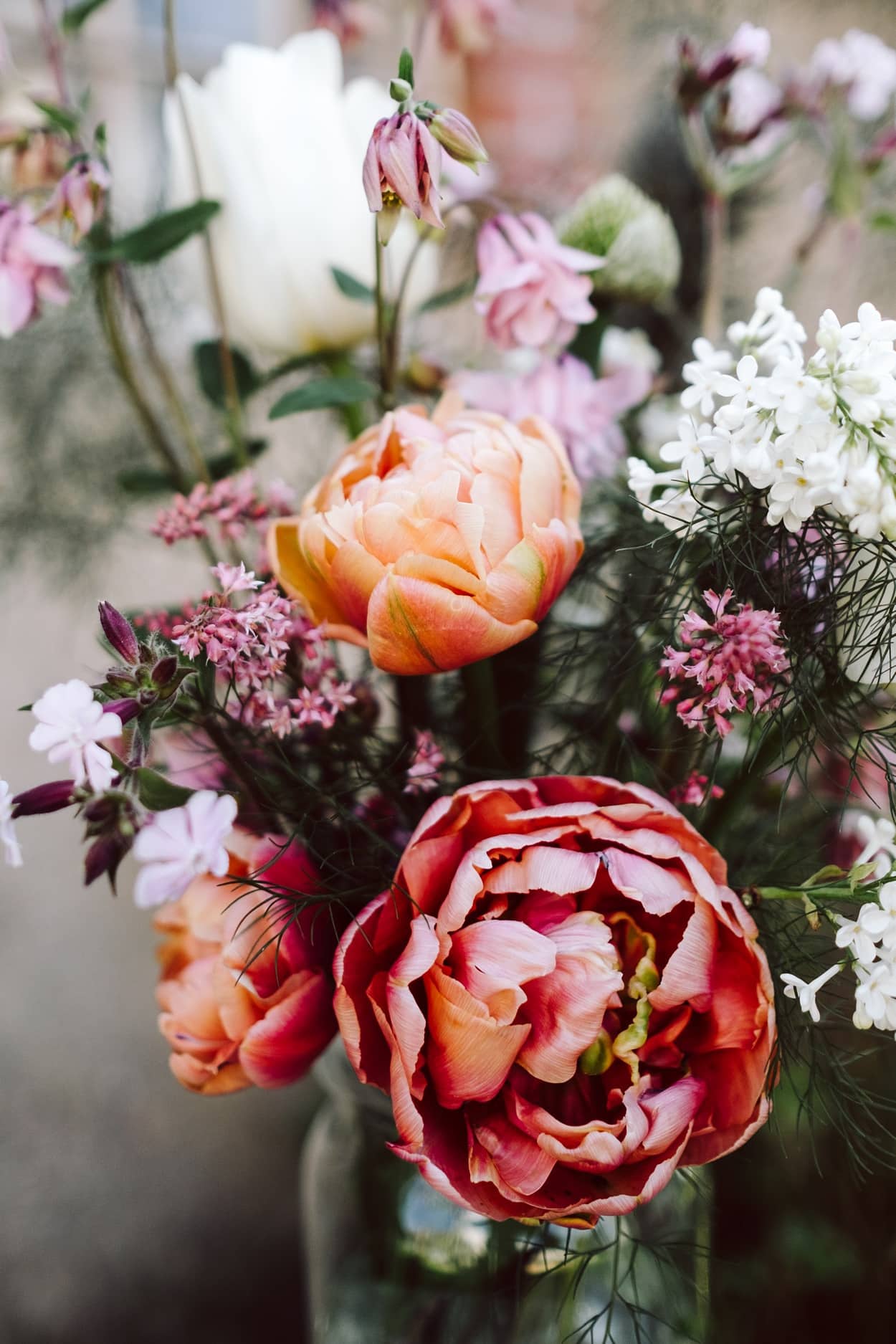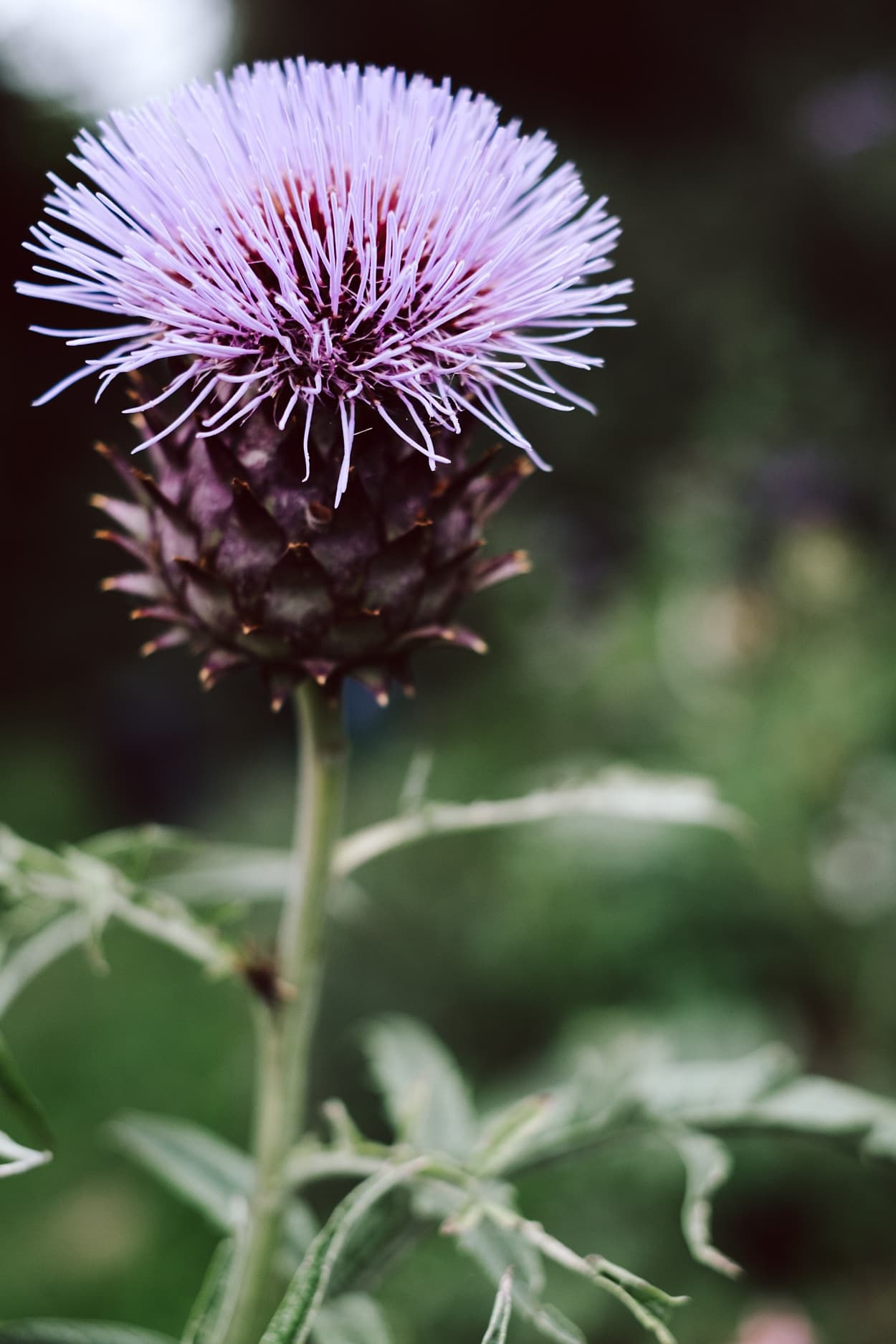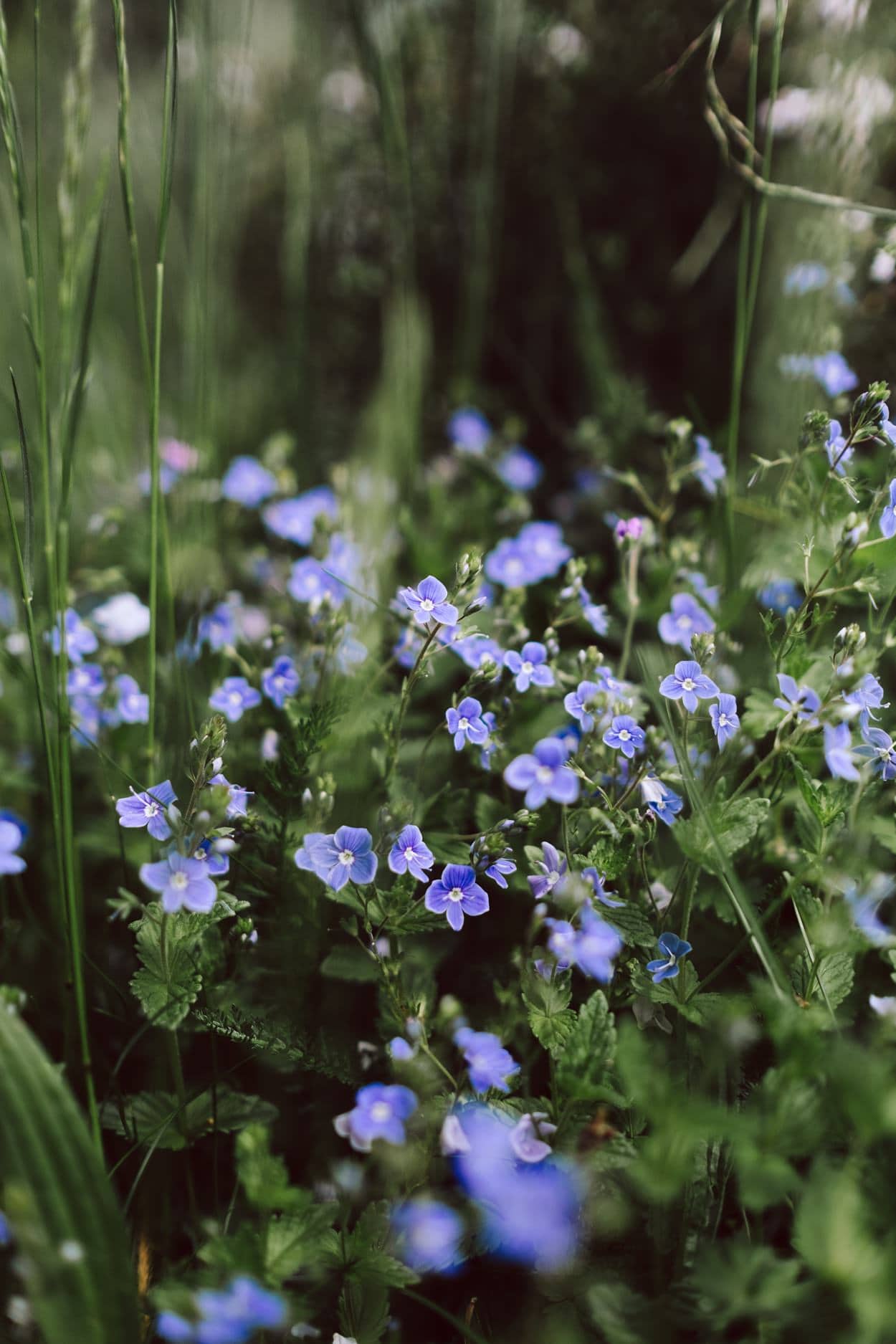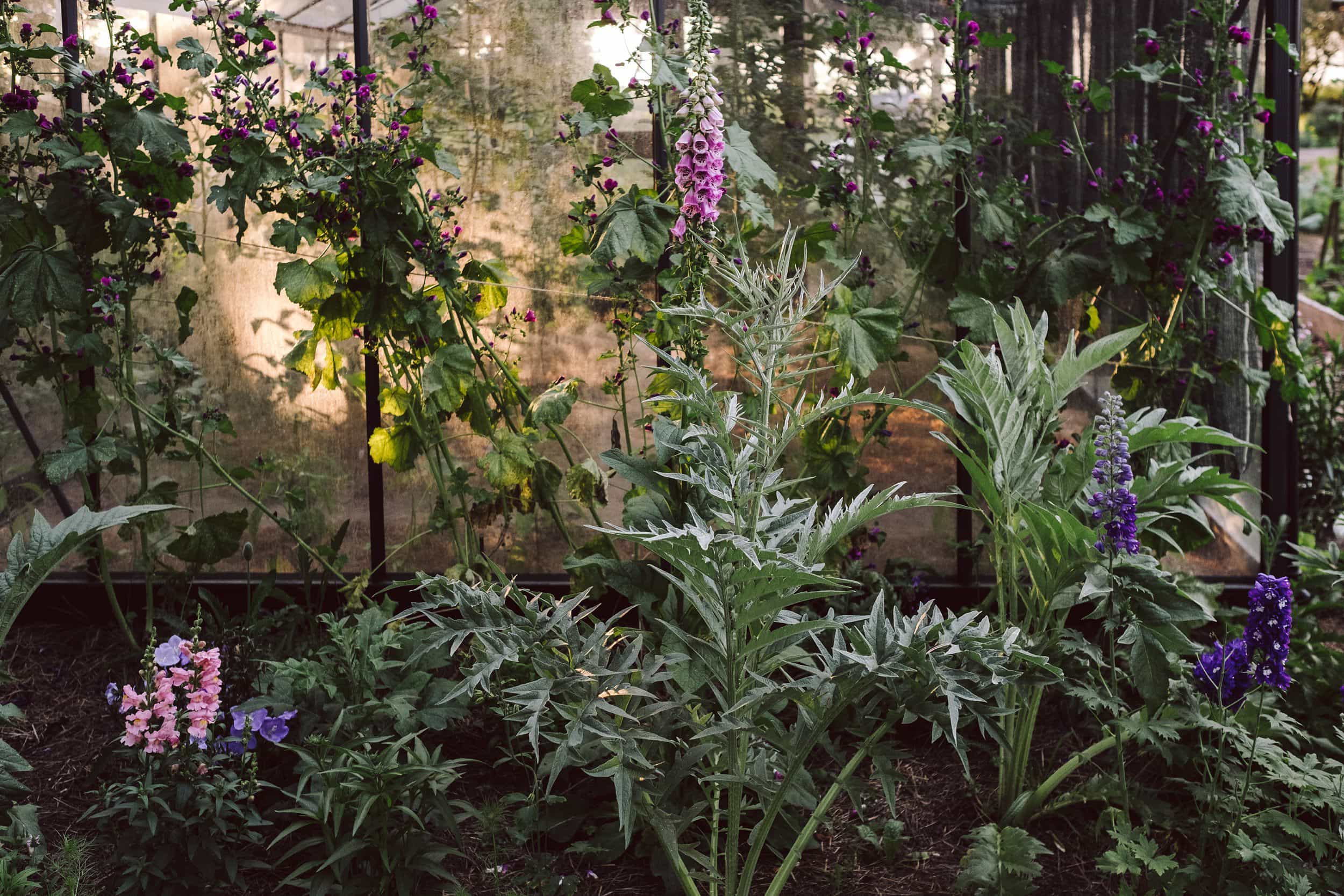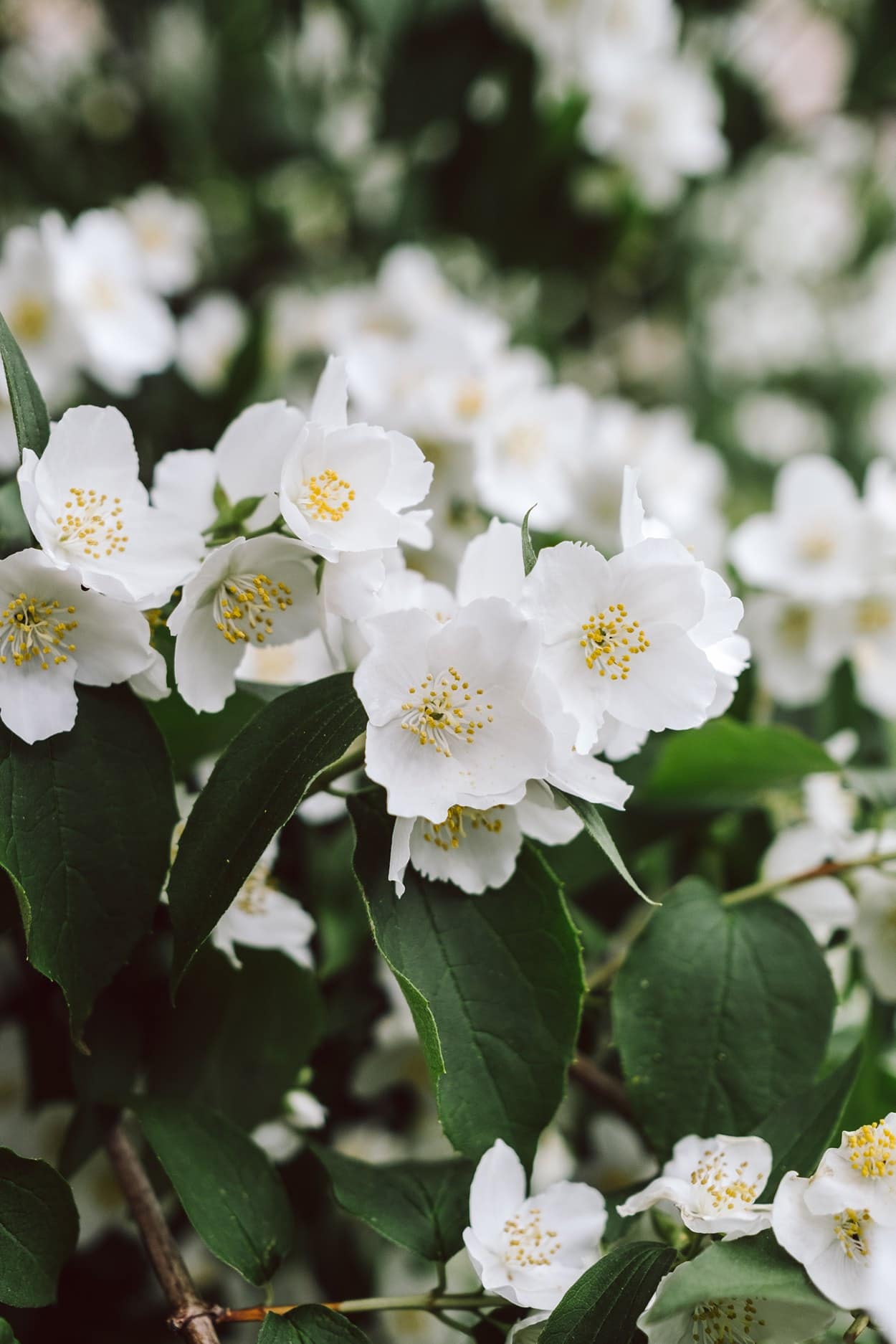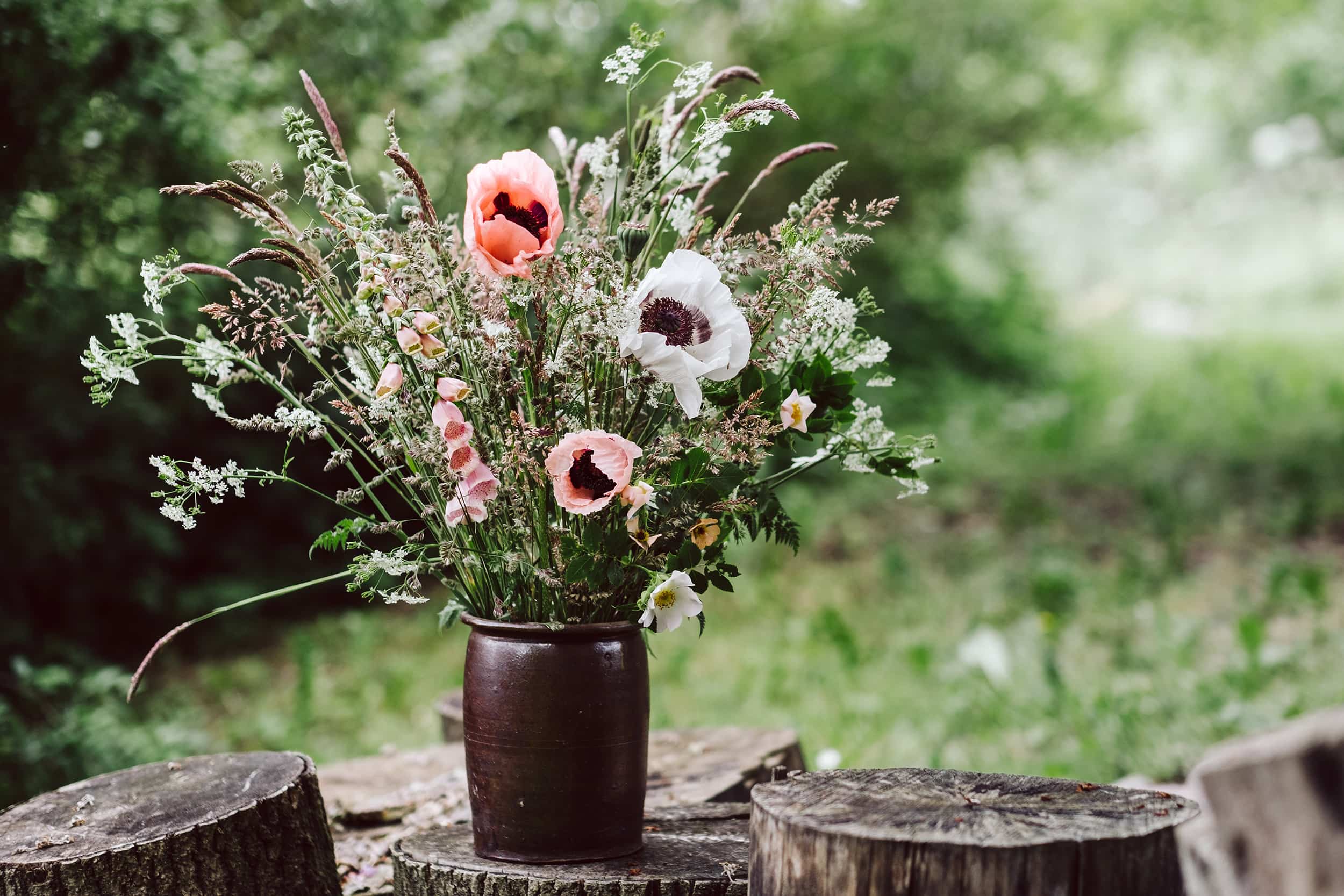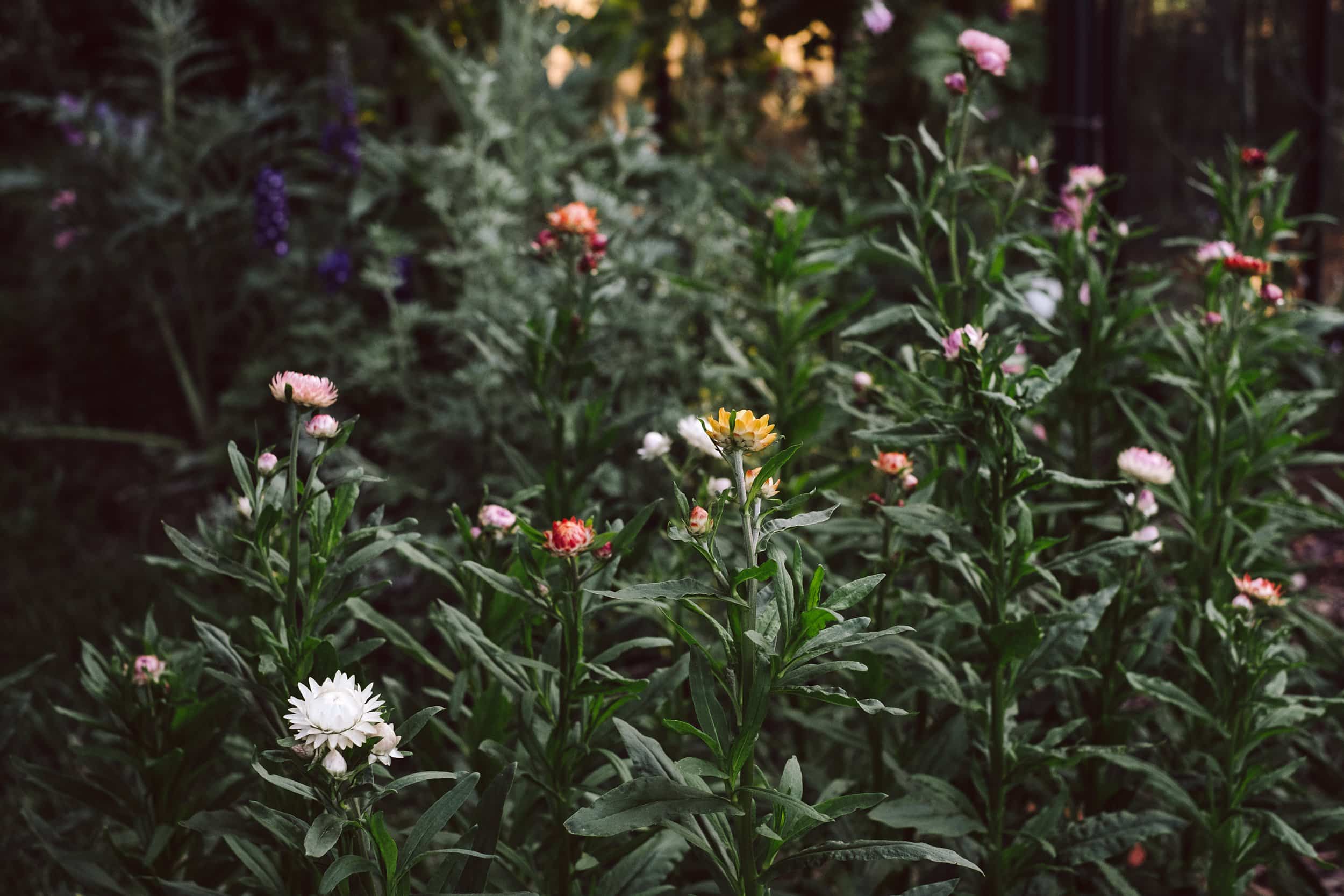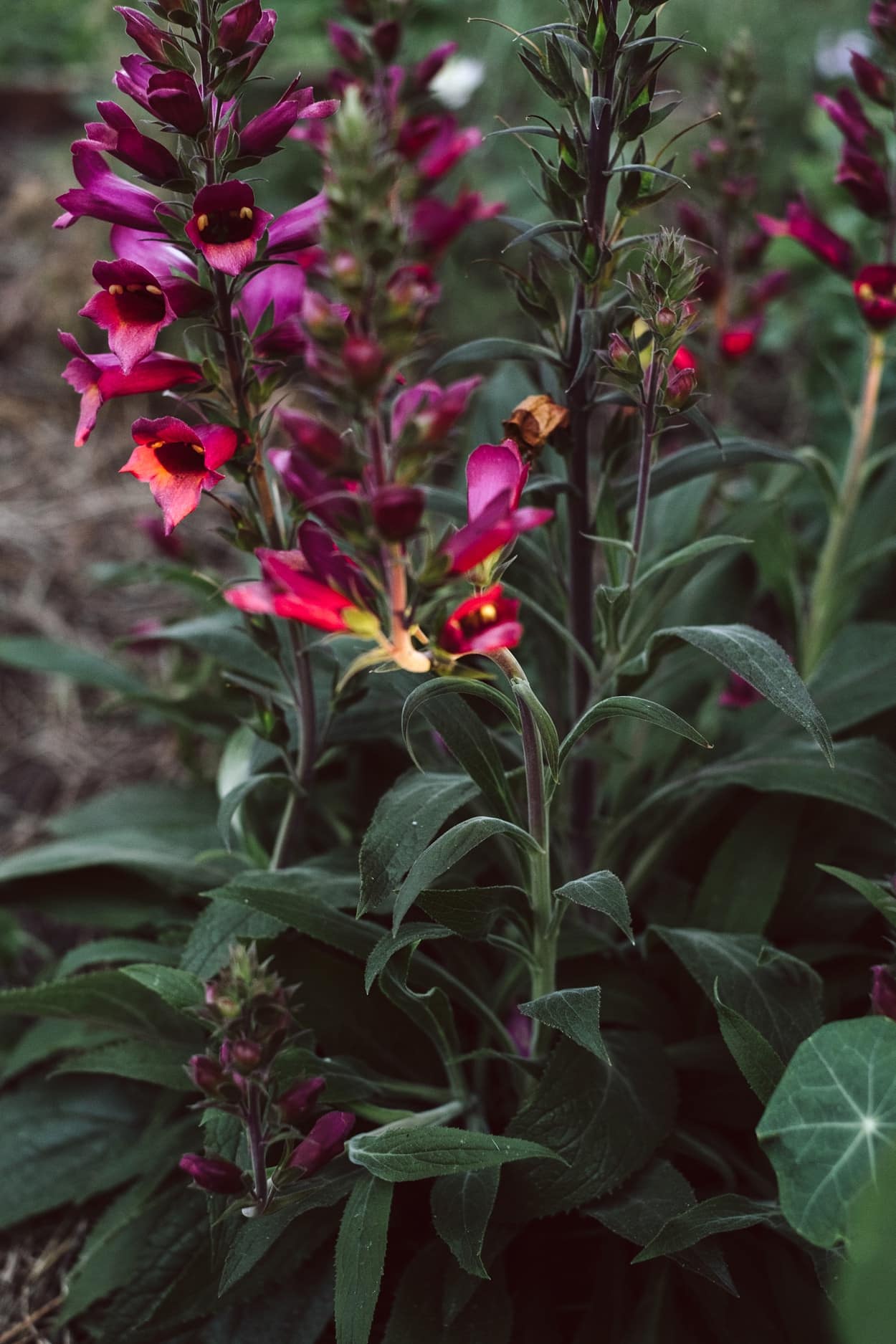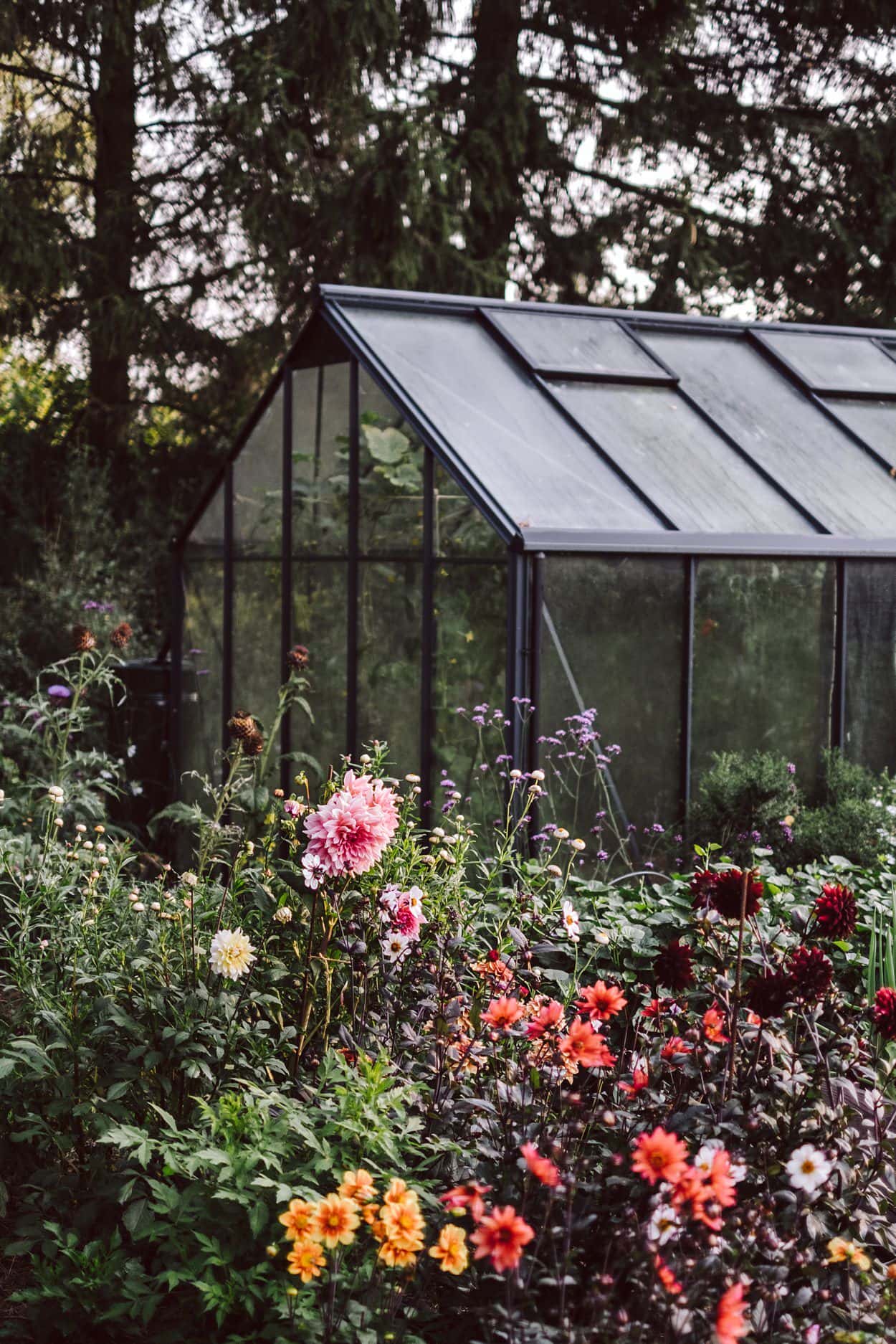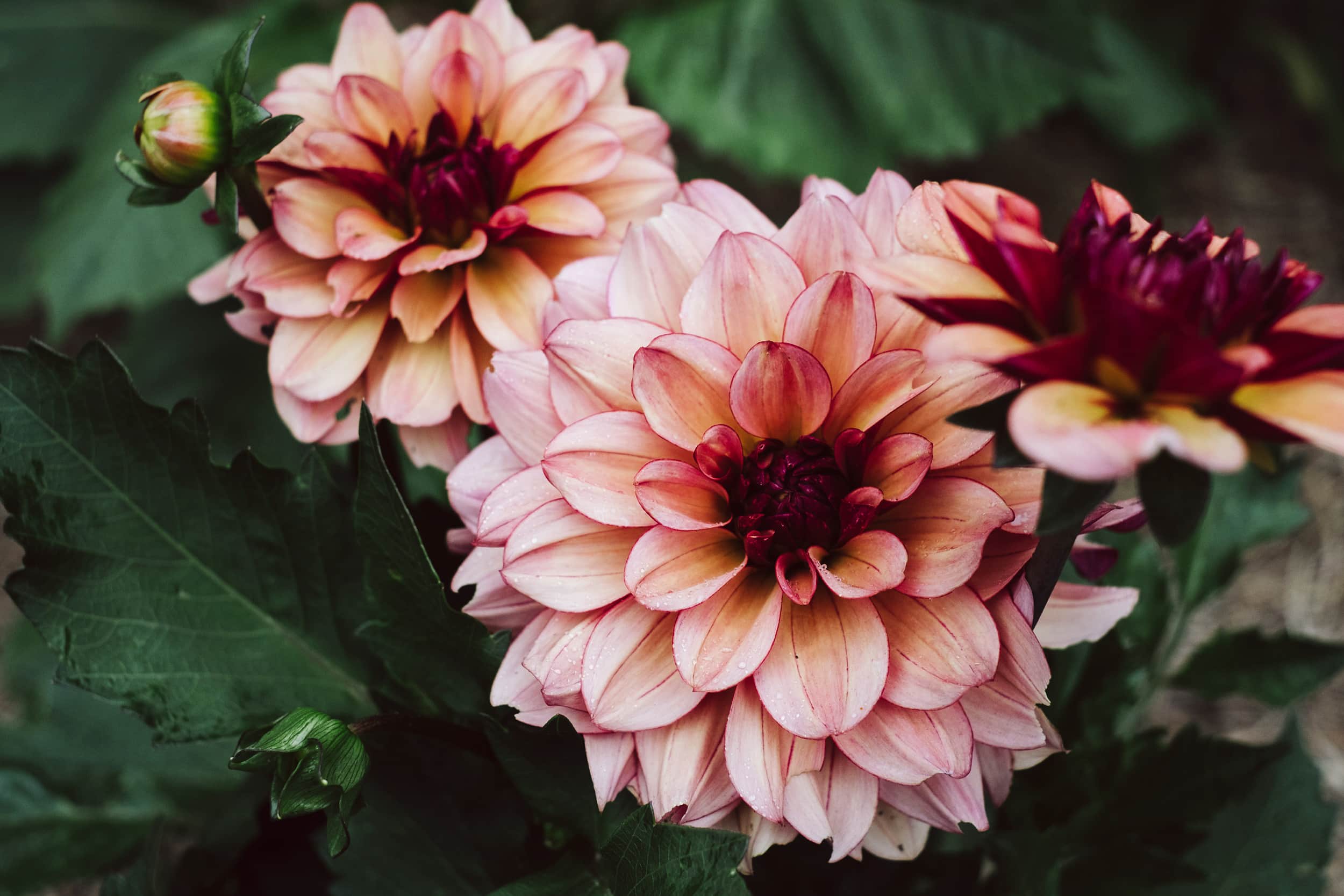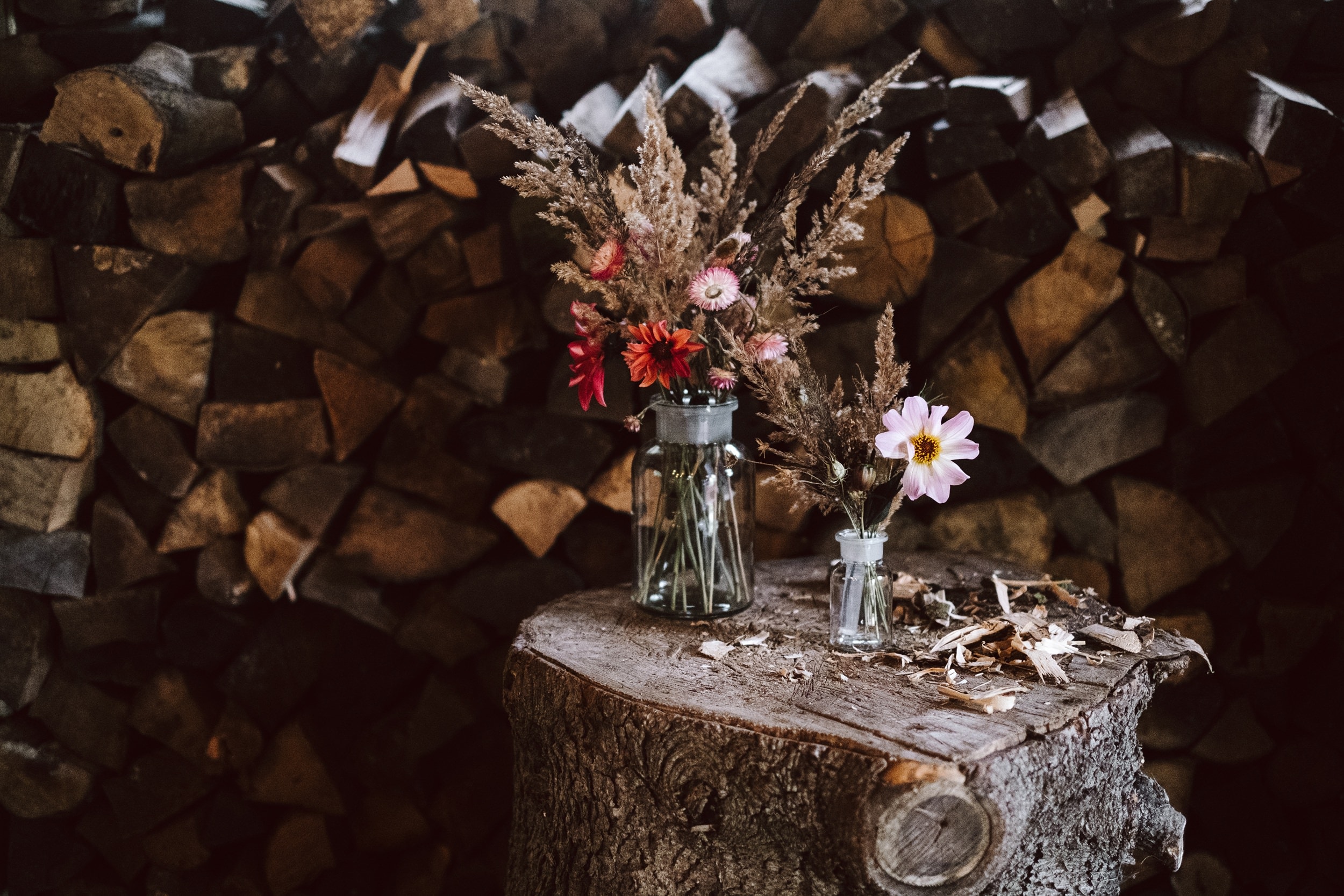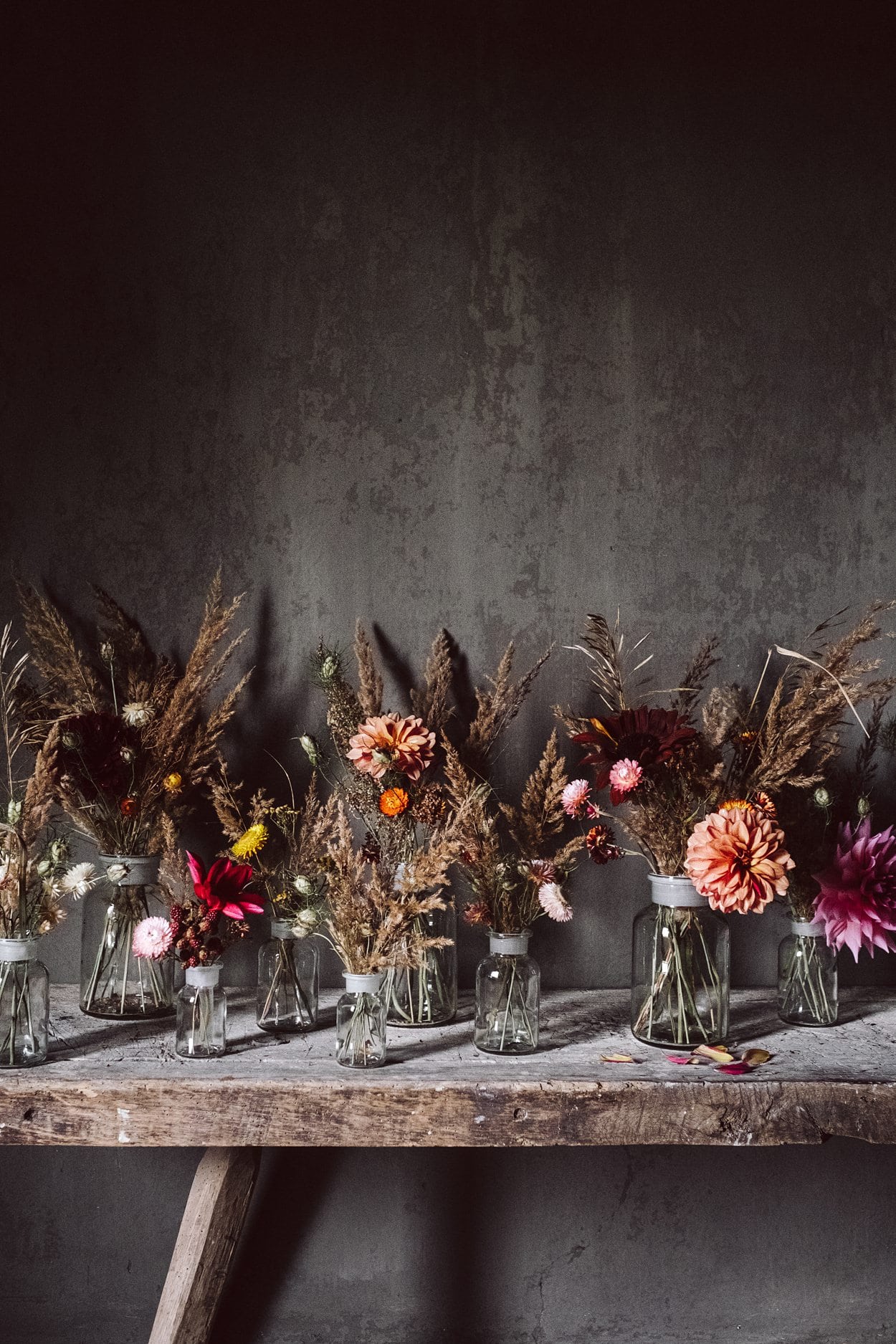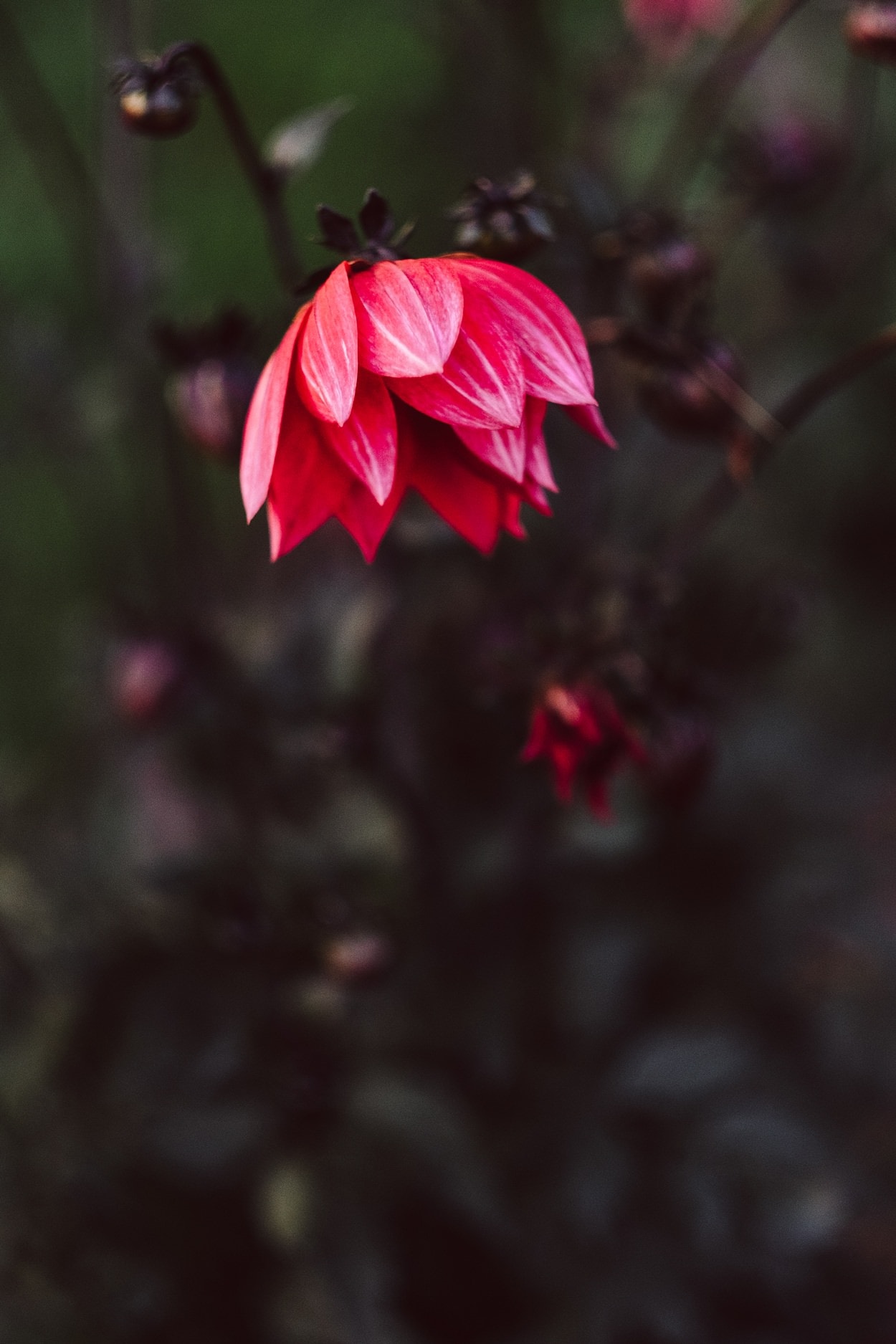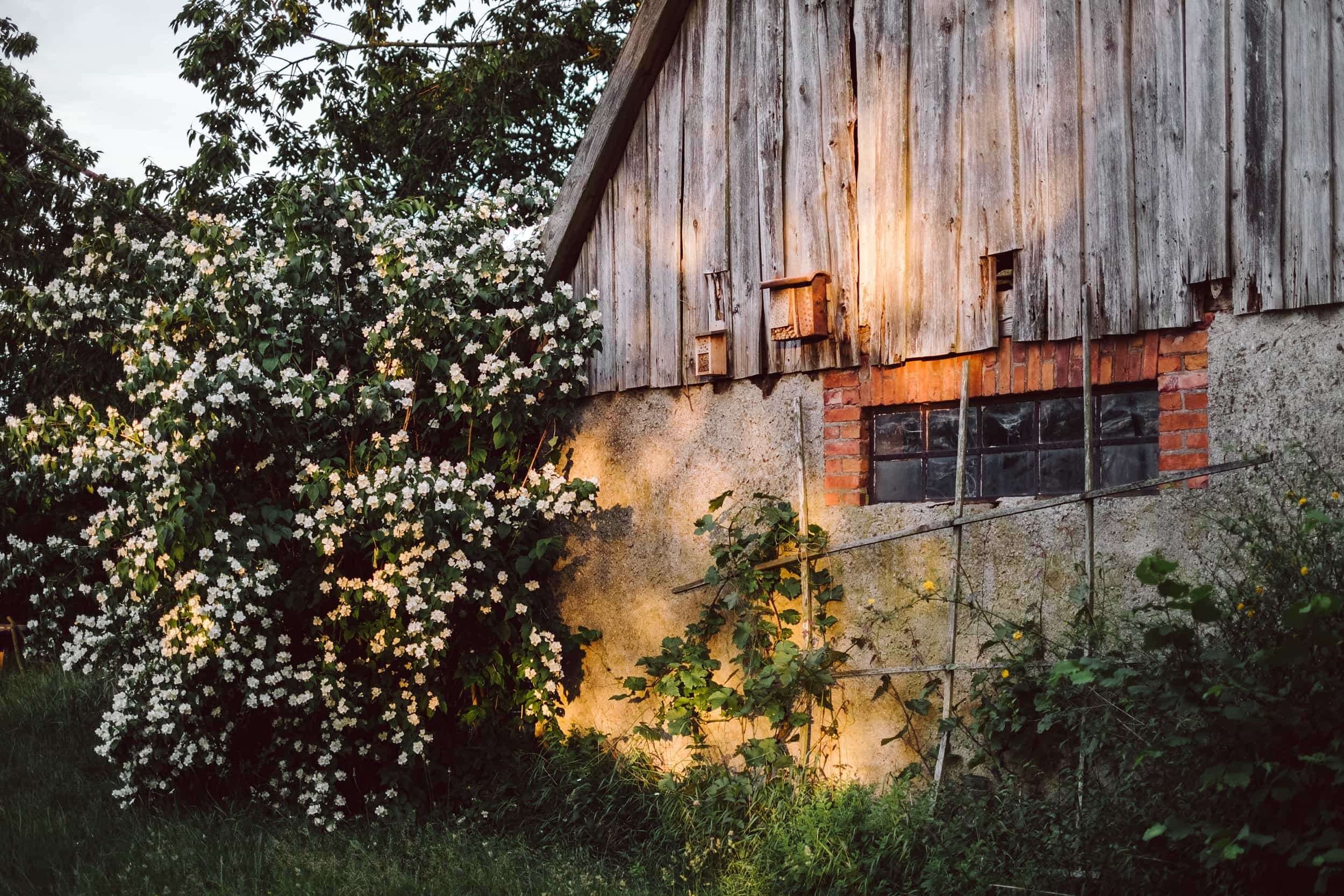
The bare crown of the pine tree is said to be overgrown at some point by a climbing rose and clematis.
Some other things are already in the making, but will only develop into what we have in mind in a few months or years. Last autumn we planted a wild fruit hedge, which in the future will not only serve as shelter and food source for small animals and insects, but will also bloom beautifully. Climbing roses stretch out their tendrils on the house wall and trees, new perennial beds were created and a more than 400 square meter large flowering meadow has finally been sown. More and more areas are growing in the garden, which are both beautiful to the eye but hopefully also contribute to a greater variety of flora and fauna.
Seeing everything in bloom in abundance, with the certainty that two or three cut stems would not stand out or would be missing, has also led to ever new colourful bouquets decorating our dining table or window sills. A new, colourful and pleasantly fragrant world opens up for us. Suddenly we are concerned with how flowers are cut correctly, combined in bouquets, artistically put together or dried.
Especially when guests are visiting, the best thing is to help yourself from your own garden to decorate the tables with flowers. That is why this year, in addition to all the vegetables we grow, a large number of cut flower seeds have been put into the growing pots. As with growing vegetables, it is exciting to experience the whole process and get a feeling for the effort and care that goes into each individual flower.
Hundreds of tulip, daffodil and allium were already planted in autumn and we eagerly awaited the first flower heads. While the tulips were already in the shop windows in the flower shops from February onwards, we had to wait patiently for weeks for our flowers to bloom. The daffodils started in the middle of April and even only at the beginning of May the tulips. Sure, here in Mecklenburg the climate is a bit rougher and nature is a bit behind. While only 200 kilometers away in Berlin the fruit blossom is already over, the first buds are opening here. But is it possible that a season is postponed for several months?
Since we have never really dealt with cut flowers, only a few times a year as birthday greetings or souvenirs for an invitation, the question of where exactly the flowers in the shop actually come from did not occur to us. Mass produced abroad under partly bad working conditions, treated with pesticides, cultivated in monocultures, grown under glass with high energy input, is unfortunately exactly what you find in many flower shops. There are more and more people who are creating an awareness of this issue (Slowflower movement) and are focusing on seasonality, regionality and sustainability in flower growing. After all, with a beautiful bouquet you want to bring a piece of fragrant nature into your home and not a guilty conscience. So if you are not lucky enough to have your own garden and still don’t want to do without cut flowers, you should ask the florist the next time you visit and make a specific decision for regional and seasonal flowers.
In the first year in our settler’s house we were mainly focused on vegetable growing in the garden. With all that was still to be done in the house, there was neither time nor nerves to think much about other garden design. That was a good thing, because we could watch the transformation of bare, desolate areas into lush and flowering corners week after week. Since we bought the plot in winter, we could not guess which bulbs, perennials and seeds would appear in spring and summer and which of the shrubs would bloom lushly and fragrantly. Many early bloomers, aquilegia in many different colours, the flowering fruit trees, lilac, peonies, elderberries, daisies, forget-me-nots, peasant jasmine, rudbeckias, irises, hydrangeas, butterfly bush, asters.
Admittedly, before we had our own garden, we didn’t even know some of the plants by name. Again, the decision for the house made us dive into a whole new theme. It is unbelievable how many different species and cultivars there are! We quickly had to realize that the plant stock on our property, roughly, resembled every other garden in the villages around us. The same species, the same colours. They were planted here and there, without a recognizable concept, without considering the demands of the location and also without the partly necessary care. We started by cutting trees and bushes that had already passed their best times or had grown so wild that they replaced other things and clearing corners completely overgrown with nettles. This alone has already brought great changes in some cases. Suddenly, plants appeared that had previously received no attention at all. Among other things, a great white currant or a small apple tree amidst long hanging spruce branches. Both now get light and space to grow with new energy.
But there accured also places for new plants. Last year we already planted and sowed the first perennial and annual flowers. Foxglove, sunflowers, verbena, snapdragon, dahlias, poppy, lupins, larkspur, echinacea, garden cosmos, hollyhocks. Even the edible perennials around our greenhouse bloomed beautifully for months, to the delight of wild and honey bees.
Behind the small ruin of a former washhouse, which serves us as a sitting area, is a lush pine tree. Unfortunately, directly in the first spring it got heavy damages by a wet snow cover. It was split in the middle of the crown and some big branches are broken off. Only because of this we have intensively studied the area under and around the tree. A handful of wheelbarrows full of nettle roots were stuck in the ground and loosened it nicely. The humusy soil is now home to shade-loving plants and has become a favourite place in the garden. By cutting back the damaged branches, an old pump came to light, which is inhabited by birds and bumblebees. Around the tree there are now small paths made of stones that we have lifted out of the ground over the course of the two years and we have used mossy, rotten branches as borders. Tree trunks in different heights in front of a fence made of hazel rods have become a small seat in the middle of our so-called forest. From there you look down on a carpet of wild strawberries, woodruff and ground ivy, from which foxgloves, hostas, ferns, Caucasian forget-me-not, cranesbill and alumroot grow.
